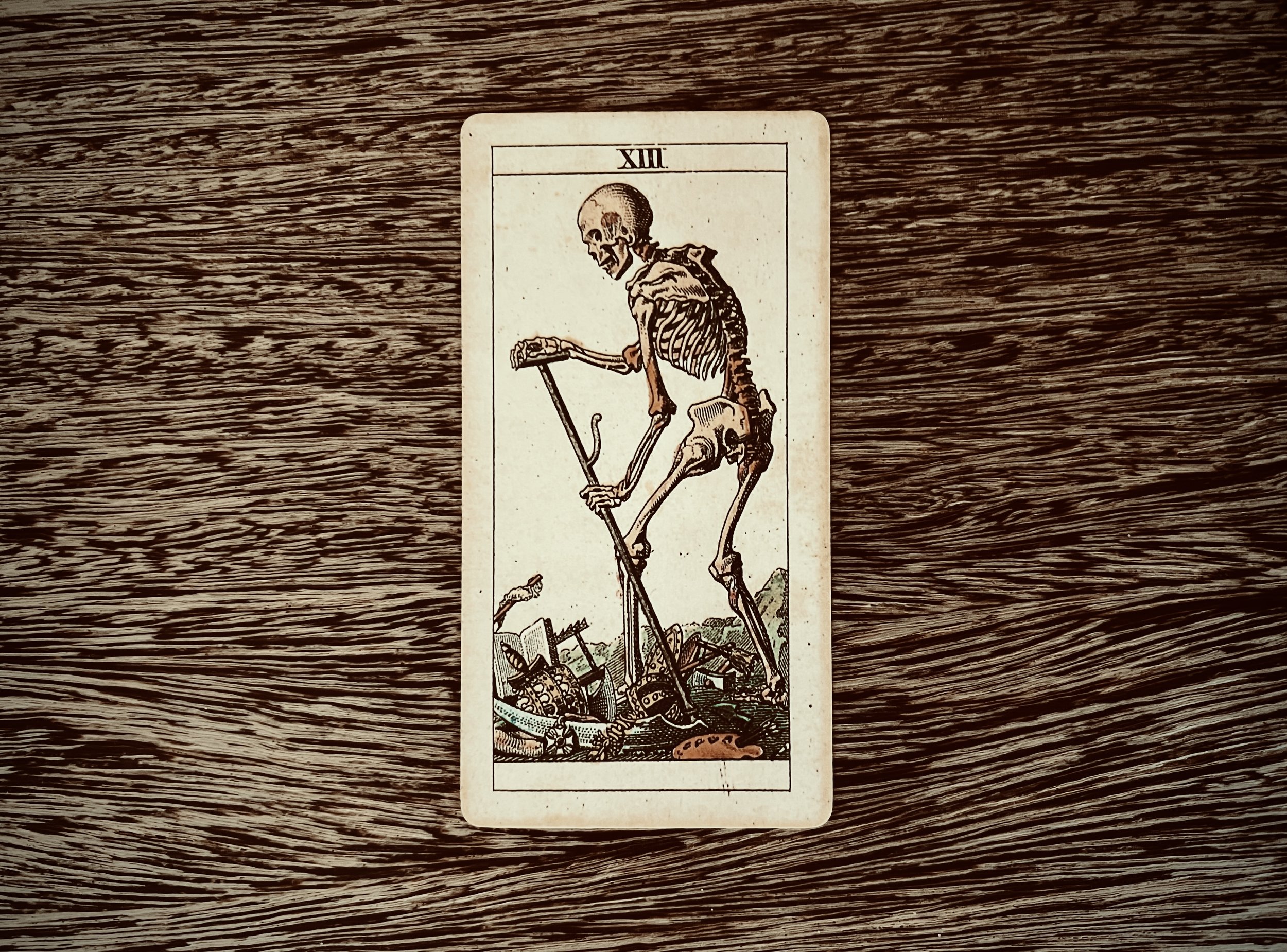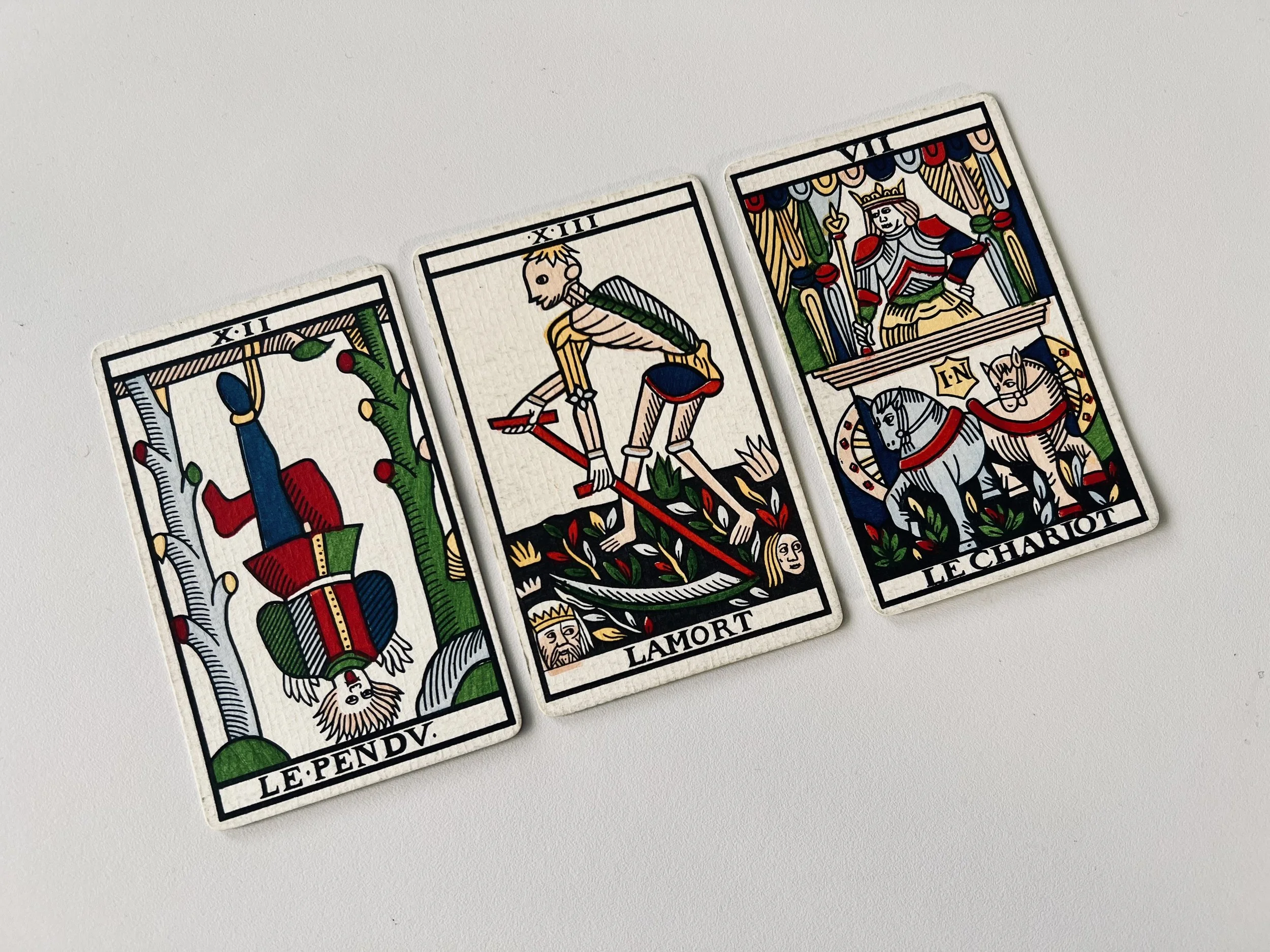The Death Card: ‘Transformation’ and Other Convenient Theories
The Death Card from Soprafino Tarot by Il Meneghello. In my private collection.
My mother always said, “Call the real thing by its real name.” This phrase has stuck with me, shaping how I approach clarity in every aspect of life. In my cartomancy practice, this principle is foundational. As my mentor and friend Camelia Elias often reminds me, common sense and function should always take precedence over arbitrary symbolism. In other words, to take an example from the Lenormand deck, a book is simply a book before it becomes a ‘secret’ or a ‘project.’ It is, fundamentally, a collection of paper bound in a cover, holding information we can use in many ways. The path from function to symbol is long, contingent, and always bound to context. To insist that a book as a symbol means a secret is to ignore that context.
The same reasoning applies to the Death card. Yet, since the New Age shift of the 1960s, many card readers struggle to grasp this concept. In the self-help frenzy that followed, the Death card was hijacked to represent ‘transformation,’ and that notion has since seeped deep into the tarot community. Social media “experts” on Instagram and TikTok constantly reassure us not to fear the Death card: “Don’t worry, it means change is coming…” And that’s when I die a little inside. Yes, my dears, it means change is coming—if by “change” you mean the transition from living to no longer living. Death is death. Period. Full stop. What might come after is a separate matter entirely, but that doesn’t alter the fact that death is death first before it can signify anything else. Death’s primary function is to end things: people die, animals die, but so do relationships and careers. Often depicted with a scythe, it clears everything in its path.
Various representations of Death in tarot and oracle decks. From left to right: Thoth Tarot, Soprafino Tarot, Jean Noblet Tarot, Jeu Lenormand, Gypsy Fortunetelling cards. From decks in my private collection.
Claiming the Death card signifies “transformation” is a convenient evasion, a way to sidestep its primary role. Convenient for what? For charging more from unsuspecting clients, for catering to personal anxieties, for avoiding hard truths, or for those who simply refuse to mature. But Death does not bend to convenience. It’s an essential part of life, an uncompromising bringer of endings. For better or worse, it doesn’t shy from its role.
In a reading, the function of the Death card is always determined by context. The question shapes its interpretation alongside other cards. Death can indeed cut down life, yet it can also sever the chains that bind us. Let’s consider a client feeling stuck in their career, hoping for a promotion.
Jean Noblet Tarot, hand-stenciled majors by Jean Claude Flornoy.
The hanged man is cut down from the gallows and moves forward. We see that the blockage is coming to an end, making room for advancement. But would it make sense to claim “transformation” if the Death card simply concluded the line? Hardly. Each card’s function must align with the question and its interaction with surrounding cards. No “arcane meaning” can override context and common sense.
So, if you want your readings to be worth people’s time, heed my mother’s words: call things by their real name. Death is death, first and foremost, before it can become anything else.



